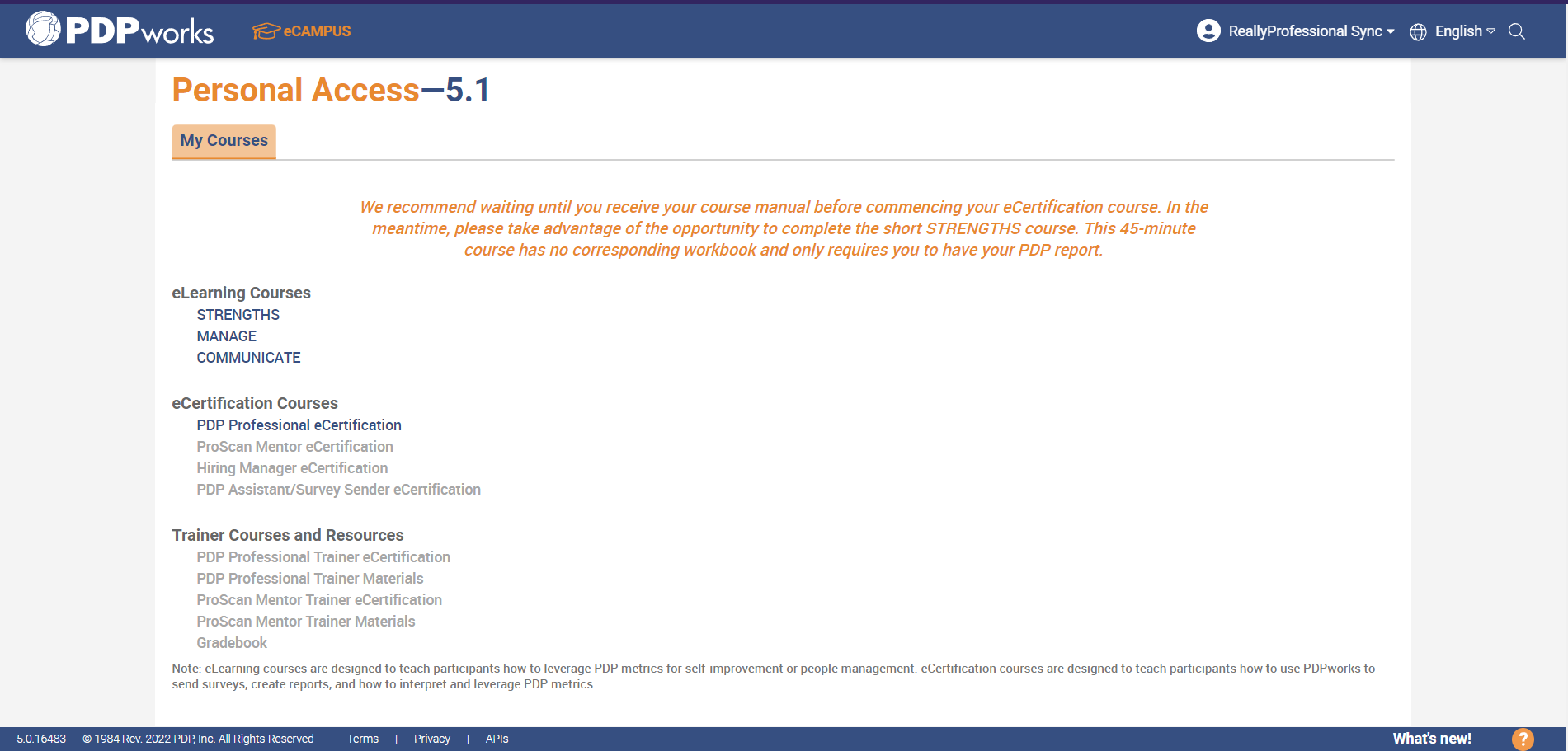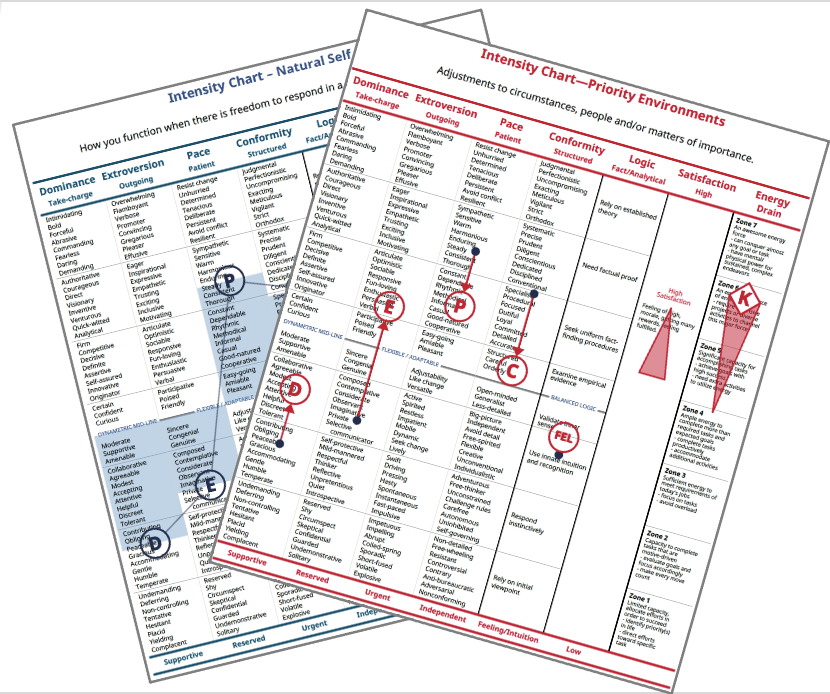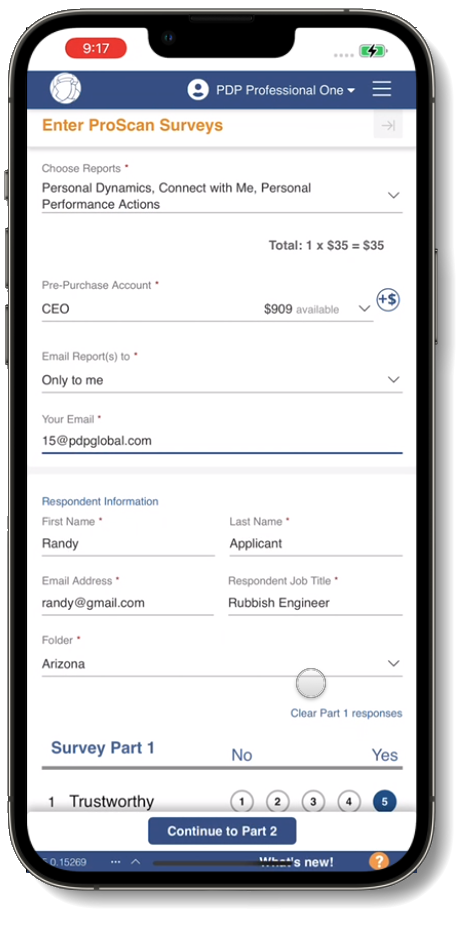Frequently Asked Questions (FAQs)
Personality profiling is a method of measuring an individual’s inherent traits.
A personality test is a tool under the personality profiling umbrella. It measures underlying and unchanging personality traits.
A behavioral assessment is a more sophisticated instrument under the personality profiling umbrella. It measures how a person will behave, adapt, and display their personality through their behavior in certain environments.
Simple personality tests can provide insights into an individual’s traits; however, without analyzing specific positions, they do not have a proven connection to job performance. If not implemented carefully, they can also introduce bias and pigeonhole employees into a stereotypical box. It is not recommended to rely on or place much weight on personality tests for hiring or management practices, unlike certain behavioral assessments.
The appropriateness of a behavioral assessment in the workplace depends on whether the instrument has the research of reliability, validity, and accuracy to support its function.
A behavioral assessment is appropriate for businesses to use if it has confirmatory and exploratory factor analyses (to validate that the instrument measures what it intends to measure), performs reliably (measured by its test-retest reliability and Chronbach’s alpha for internal consistency), and is free from disparate impact (so no protected group faces discrimination). If trying to use a behavioral assessment for hiring, it must also have studies confirming that it can predict job performance metrics. Get the entire checklist to know whether your behavioral assessment is ideal for the workplace.
PDP is the most accurate behavioral assessment on the market and consistently receives higher than industry standard marks for validity, accuracy, and reliability. For example, nearly 40,000 working adults comprised PDP's recent multi-year research that resulted in 11 exploratory factor analyses and three confirmatory factor analyses. We followed up our statistical research with real life interactions with people. Over 100 research interviews lasting 1-2 hours were painstakingly conducted to confirm the accuracy of our results with individuals taking the ProScan.
Exploratory factor analysis is a statistical technique to identify the relationship between multiple variables and their respondents, then determine which are the strongest. PDP performed EFAs across the years to identify the items to include in the ProScan Survey, which held the greatest statistical power.
CFAs take EFAs a step further and are used to test a hypothesis about the structure of variables and their construct to confirm if the instrument measures what it claims to measure. There’s a rigorous amount of research needed to attain a CFA, which is why it remains the gold standard of statistical evaluation. PDP performed CFAs to test the model fit of adjectives identified by the EFAs.
Disparate impact, which is essentially unintentional bias, occurs when members of one applicant group have a greater opportunity for employment because of their test results than another group.
Reliability refers to how dependably or consistently an instrument measures a characteristic (it performs the same time after time), while validity ensures that the instrument measures what it claims to measure.
Psychometrics is a field of study focused on psychological measurements of mental capacities such as knowledge, skills, and abilities. By law, only licensed psychological professionals such as counselors and therapists should use psychometrics.
People management is a practice that taps into the full potential of your organization’s people to maximize productivity and satisfaction. Recruiting, hiring, engaging, and retaining talent are all important pieces to consider.
People are a company’s greatest asset. Investing in them will boost morale, increase loyalty and retention, avoid turnover and training costs, develop skills and efficiencies, attract top talent, and create promotable employees.
PDP stands for Professional DynaMetric Programs since we measure (“metric”) the dynamics (“dyna”) of people within a holistic people management system.
DynaMetrics is similar to psychometrics in that it focuses on measuring psychological aspects of mental capacities, however DynaMetrics does not require a degree other than PDP certification to learn how to administer, interpret, and apply the ProScan Survey.
Sparked by the old adage “putting a round peg in a square hole,” we believe in making all the pieces fit. That phrase, paired with the timeless wooden ball puzzle, become our symbolic logo in 1978.
The vision for PDP Global was started in the 1970s by Bruce M. Hubby, a consultant and entrepreneur, to help people understand the strengths and behaviors of themselves and others. In 1976, several experts gathered to bring the vision to life, including Dr. Dudley Solomon, then President of the National Asthma Center at the National Jewish Hospital in Colorado, and Dr. Samuel R. Houston, a statistician at the Kittering Research Foundation and co-faculty professor at the University of Northern Colorado.
Dr. Samuel R. Houston set forth five stipulations before agreeing to join the team in creating PDP:
- Factor analysis must be used to find pure clusters of trait descriptors and nothing less than an 80% correlation coefficient would be accepted (the industry standard is 60%).
- Stimuli methodology should be used instead of self-perception methodology since stimuli response is the most natural and the least skewed option.
- Responses should be collected on a 5-point response scale (a Likert scale) because it is an effective way to gather responses on attitudes and opinions.
- Include a variable norm to measure the strength of traits in reference to both the individuals’ other traits and population norms.
- Share the results with the person surveyed to confirm results.
PDP is used for an organization’s talent management system. Hiring is the first area PDP touches as it helps define and attract the right people to the right positions. From there, it empowers managers to motivate employees plus encourages efficient communication. Higher retention, satisfaction, and productivity often result from using PDP. Cultural shifts can take place across teams, departments, and companies as they experience greater understanding and appreciation for each other’s strengths.
Yes, PDP has achieved a 98% accuracy rate.
Yes, unlike many other options on the market, PDP is validated for hiring. Multiple analyses were performed to investigate and confirm the predictive validity of ProScan, meaning that the ProScan results are significantly related to job success criteria. PDP surveys and certifications are also EEOC and ADA-compliant.
In 2021, we concluded multi-year studies that resulted in three CFAs in addition to the 11 EFAs already held. Over 39,000 working adults participated in our research from across the country.
PDP’s trait model consists of five factors:
- Dominance: The Take-Charge Trait
- Individuals with high dominance are described as direct, decisive, innovative, and competitive. They get results and exert or challenge authority. Those with low dominance are supportive, moderate, and at peace with others.
- Extroversion: The Social Trait
- Individuals with high extroversion are described as enthusiastic, persuasive, and influential; they seek opportunities, build teams, and delegate technical tasks. Those with low extroversion are contemplative, private, and unpretentious.
- Pace: The Patience Trait
- Individuals with high pace are described as steady, consistent, persistent, dependable, and cautious about change. Those with low pace are spontaneous, versatile, and action-oriented with a sense of urgency.
- Conformity: The Systems Trait
- Individuals with high conformity value structure, rules, accuracy, and loyalty. They will follow and maintain established systems and procedures perceived to be right. Those with low conformity want independence, personal freedom, and minimal external controls.
- Logic: The Reasoning Trait
- Individuals with high logic are analytical and process decisions using facts. Those with low logic are intuitive and process decisions based on life experiences.
No. “High” or “Low” describes the location of the particular trait relative to the mid-line of an individual’s ProScan results, not whether the trait is positive or negative. All traits have their own strengths and challenges, regardless of positioning. The key is to increase awareness and understanding to bring out someone’s strengths.
Yes. The PDP system is not limited to particular industries, as behavioral traits apply to everyone no matter where they are employed.
PDP is appropriate for companies of all sizes where there are two or more people involved. We have helped achieve successful results for five-person companies up to Fortune 500.
Yes. To ensure that the PDP system is implemented correctly and without bias, we offer multiple certification levels depending on the function. That way, your organization has everything it needs to run the system in-house.
A ProScan Survey is PDP’s behavioral assessment consisting of 60 well-researched adjectives that describe behavior.
Although ProScan is not a timed survey, on average it takes 10 minutes to complete.
Yes! One of the cornerstones of PDP is that behavioral assessment results are not meant to be secretive or withheld from the survey-taker. A conversation is necessary to review the results together, confirm their accuracy, and discuss findings further.
Absolutely. Business owners, members of the C-suite, and executives appreciate PDP’s ability to inspire culture and ignite productivity.
Using JobScan, the model of your ideal candidate is created from characteristics of your top performers and input from managers. Then, PDP automatically provides relevant adjectives and job highlights to use in advertising that attract qualified candidates.
PDP’s JobScan automatically creates an ideal candidate profile from the characteristics of your top performers in that role and managers’ input. This is when your company can decide to adjust the desired traits for the position compared to was sought in the past (ex: maybe your new sales team member needs to be less fast-paced and more detail-oriented than the person before, so higher Pace and Conformity are reflected in the model profile).
The US Department of Labor estimates that a bad hire costs its company 30% of the employee’s first-year earnings. Bad hires can negatively affect everything from sales, client relationships, productivity, to morale.
Hiring the right person is difficult because a good fit goes beyond qualifications and experience on a resume to “soft skills.” Recruiters will often use their judgment on whether the person possesses these desired soft skills since soft skills are difficult to quantify. However, an interview isn’t enough time to really know someone, and most bad fits stem from behavioral patterns rather than a lack of capabilities.
JobScan essentially provides a blueprint for the type of person you want to attract for the open role based on related behavioral traits. It includes job description terms to then attract qualified applicants, plus interview questions to ensure their traits align with the job responsibilities.
Employee retention is important since it signifies that people are engaged, which in turn leads to higher productivity and a healthy culture.
Employee retention is often calculated annually, although you can determine your own time period. Take the number of employees that stayed through the end of your time period and divide that by the number of employees at the beginning of the time period, multiply by 100, and that’s your employee retention rate.
There are many factors that affect employee retention, but some popular methods include:
- Providing continuous and open feedback
- Ensuring competitive pay
- Offering additional perks
- Enacting a training and development program
- Giving praise for a job well done
- Supplying the tools needed for success
- Following a work/life balance
- Hiring a good fit at the beginning
An employee retention rate of 90% or higher is considered good.
By knowing whether a person’s behavioral traits are a match for the role, what their motivators are, and how to communicate effectively with that employee, PDP allows people to be understood, valued, and astutely managed. PDP sets that individual and organization up with the people management system for long-term success.
As a leader, use an employee’s ProScan to gain insight into how they operate based on their behavioral traits. You’ll also see how much pressure they’re facing from work or outside influences, plus their daily energy drain. With this knowledge, you can have an open conversation about ways to adapt behavior and the environment so they can see more success.
ProScan is easily administered across a company, taking 10 minutes or less to complete individually. Managers can use the behavioral insights to better manage and motivate employees, while employees can use them to improve communication and reduce conflict. To take it a step further, TeamScan then combines the ProScans in a selected group (the company, team, department, or any desired section) to show that group’s culture. Teams can analyze their own TeamScan report to find efficiencies in how to run, or opposing teams can be compared with one another to operate more smoothly.
ProScans of two individuals can be compared in a Side-by-Side Report that overlaps similarities and differences. By learning how someone prefers to be communicated with and their own natural communication style, recommendations can be identified to mitigate obstacles. The same thing can be done for members across the team by having an open conversation about ProScan results and sharing behavioral insights for increased understanding.
Each ProScan includes a Leadership Style of the individual based on their trait makeup and unique trait pairs, along with preferred communication styles. Managers can review their own tendencies and adapt their leadership approach based on the employee’s preferences to be more effective.
While both PDP behavioral assessments and DiSC personality tests are valuable tools for gaining insights into an individual's behavior and communication style, PDP assessments are created for business use. PDP is validated for hiring, allows a wider range of results, and measures more information like energy style, energy level, satisfaction, and logic in addition to four cornerstone traits. Learn more about the differences between PDP and DiSC in our blog.
It is not recommended to use DiSC for pre-employment screening, as stated by a DiSC partner website:
“Although DiSC® profiles are often used as part of the hiring and onboarding process, they're not recommended for pre-employment screening. DiSC does not measure specific skills, aptitudes, or other factors critical for a position; it describes one’s natural work behavior patterns or styles to help improve productivity, teamwork, and communication.”
Although both Predictive Index and PDP Global assessments were designed for business use, PDP takes validation a step further. PDP has published Confirmatory Factor Analyses, a wider range of results to identify more closely with the individual, and a culture of discussing results with the survey-taker. Get more information about these differences between PI and PDP.
Enneagram is a common name in the personality profiling industry. Its roots are grounded in spiritual traditions versus PDP’s scientifically-based founding, which affects its credibility today. Learn more about the differing level of validation between PDP and Enneagram in our blog.
Don't see your question?
From Our Blog
Stay up to date with what is new in our industry, learn more about the upcoming products and events.

Easy access to eCampus from PDPworks

Report Enhancements

